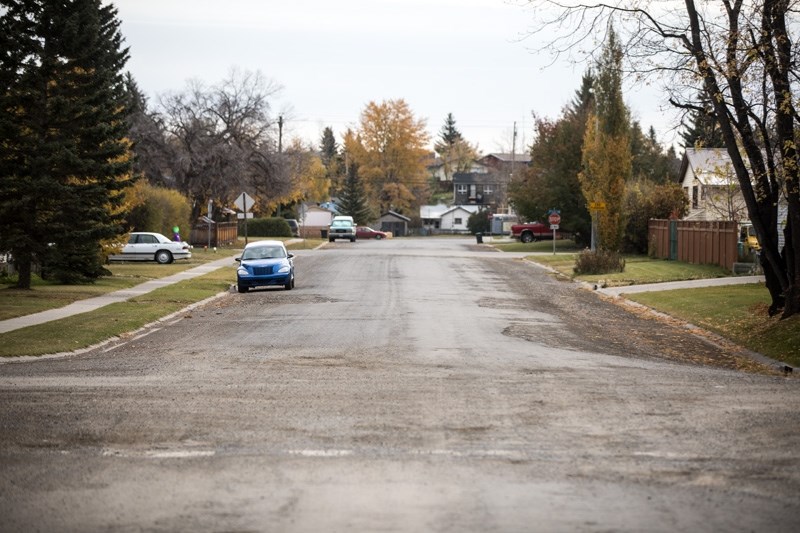Black Diamond councillors say they need more time to figure out how to deal with $20 million worth of aging infrastructure in the community.
At its Sept. 21 meeting, Town council was presented with a list of 17 infrastructure projects that need to be done including road repairs, leaking water mains and sewer lines in poor condition.
Coun. Jackie Stickel said they will need to sort through the list and look for funding sources to be able to start work.
“I think there is a lot more information that needs to be obtained, like where the money comes from and timelines,” she said. “We’ve got to really think about it individually.”
The Town’s engineer, Urban Systems, was contracted in early 2015 to conduct an infrastructure study to determine the age of sewer and water lines, detect leaks, video sewer systems and evaluate the condition of roads and sidewalks, as part of an asset management strategy.
The study suggests six priorities, including connecting a water line from 4th Avenue SE to the Kaiser development area and industrial park to the north, estimated to cost $3 million.
It shows the current water flow of 1,000 imperial gallons per minute in the industrial area does meet building code requirements, but it does not meet the Fire Underwriter Survey recommendations of 2,200 imperial gallons per minute. It’s believed the water line would provide adequate pressure to meet those recommendations.
When considering this priority, council can choose whether to construct the water main first and recover the costs from future developers in the Kaiser development area or wait for developers to pay off-site levies before installing the water line.
Meghan Aebig, project engineer with Urban Systems, said to determine the priorities values were assigned to the roads, sewer lines and water lines needing repairs based on the existing condition and level of risk.
“We looked at the overall cost of what it would be to replace each road and include sidewalks on either side,” he said.
Priorities include replacing the sewer, road and sidewalks on 2nd Avenue NW between 1st Street and Government Road at an estimated cost of $825,000. Repairing water leaks and considerable potholes in an alley just south of Centre Avenue from 3rd Street to 1st Street SW is estimated to cost of $275,000.
Priority projects also include replacing a 45-year-old water main and road on 3rd Avenue NW between 2nd and 3rd Street estimated at $1.7 million, replacing sewer, road and sidewalk at 2nd Avenue SW between 4th Street and Government Road at an estimated cost of $3.1 million and replacing the 2nd Street lift station estimated at $525,000.
Sharlene Brown, chief administrative officer, said while $20 million may seem like a lot, particularly when compared to the Town’s annual budget of about $3 million, she said Black Diamond is no different than any other Alberta community when it comes to aging infrastructure, due to funding constraints.
“It’s been a public discussion that’s been going on through the Federation of Canadian Municipalities for a number of years,” she said. “I believe we (Black Diamond) are keeping pace with what we need to do. When I talk to other municipalities they are in the same condition.”
According to the Federation of Canadian Municipalities 2016 Canadian Infrastructure Report Card, 35 per cent of all municipal infrastructure is in fair, poor or very poor condition, increasing the risk of service disruption and requiring significant repair or replacement in the near future to ensure service levels remain consistent.
Brown said the Town had been replacing infrastructure each year until the 2013 flood hit. Its last project was 1st Street SE in 2012.
“After the flood the priorities had to change,” she said. “Now that the flood mitigation piece is over with, other than the financial part of it, we need to go back and say, ‘What do we need to focus our attention on?’”
The Disaster Relief Program provided the Town with funding to do some video and water line testing to determine critical areas that needed fixing in regions impacted by the flood, said Brown.
“We need work done on water, sewer and roads,” she said. “We need to be able to support future growth. Over the next five years we have to find ways to be able to finance and address these.”
Council and administration will work together to look into grants, borrowing and reserve funds to address the priorities, said Brown.
“This is part of the five-year capital planning,” she said. “We might not get the whole infrastructure piece dealt with in that five years. It will be a staged approach.”




